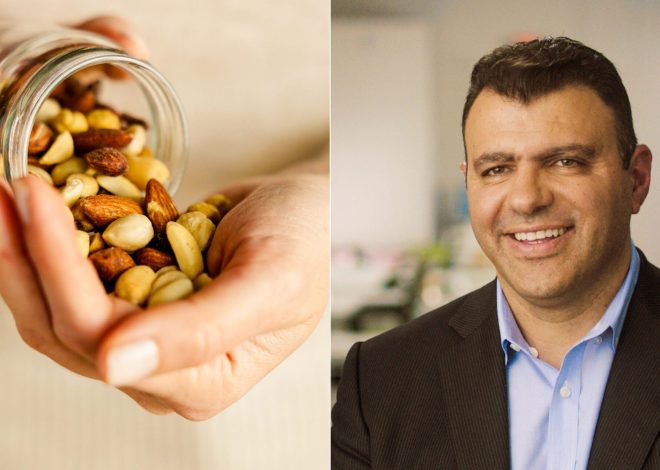
How two tablespoons of olive oil a day protect against heart attack and stroke
Anyone who studies olive oil and its effects on health will come across tongue twisters from chemistry books. The most important are tyrosol and hydroxytyrosol. Like resveratrol, they belong to the group of polyphenols. In the human body, they act as antioxidants, protect cells and keep blood vessels supple.
Olive oil, at least the really good kind, contains them in high concentrations, along with many other polyphenols. Studies show in a fascinating way that olive oil of the highest quality is particularly valuable for protection against these annoying ailments. Anyone who knows this will regret all the more that the vast majority of olive oils sold in supermarkets do not belong to this category in terms of content.
“The best olive oil is one that is rich in phenolic components,” explains Spanish health researcher Maria-Isabel Covas from Barcelona.
Polyphenols: The protective substances in olive oil
Their beneficial effects are so scientifically proven that producers are allowed to advertise the two substances on the label – with official permission from the EU. “Olive oil polyphenols help protect blood lipids from oxidative stress,” is the EU’s permitted health claim. Olive oil is therefore a neutraceutical, one of those modern foods with pharmacological effects. To put it simply: a liquid gourmet pill for many things.
Advertisement
In fact, the EU Health Claim is based on a rapidly growing number of scientific studies on polyphenols. Polyphenols have a positive effect on many common diseases: inflammation, allergies, arteriosclerosis, thrombosis, i.e. stroke and heart attack, and cancer. More than 8,000 different structures of this group of substances are known, several hundred of which come from edible plants, such as fruits, vegetables, nuts and seeds, roots, bark, leaves, for example in tea, coffee, wine – and olive oil.
Polyphenols are not part of the regular plant metabolism. Plants produce them to defend themselves against parasites, bacteria or fungi. Their most important property is protection against oxidation.
Olives produce more than 20 different polyphenols
Polyphenols are found in olive leaves, the fruit and the ready-to-eat extract of the fruit – but in very different quantities. While the proportion of protective substances in the pulp is two to three percent, which amounts to an enormous amount of 200 to 300 grams per kilogram, only a good thousandth of this remains in the oil, namely up to 1000 milligrams per liter in top oils.
The entire production and processing process is crucial for a high polyphenol content in the oil:
- The lowest value is found in refined oils (zero to five milligrams per liter)
- This is followed by pomace oil (ten to 30 milligrams/liter)
- and simple “olive oil” (ten to 100 milligrams/liter).
Polyphenol quantity depends on maturity, variety, age and storage
The amount of polyphenols contained in the oil also depends on the ripeness of the olives, possibly on the variety and the age and storage conditions of the oil. Polyphenols not only protect the heart, but also the oil itself from oxidation, breaking down in the process. Oil that is stored in sealed steel tanks with inert gas stays fresh longer and its polyphenol content remains high over time than oil that is stored in an opened bottle in the warm kitchen.
The health relevance of an olive oil is therefore directly related to its position in the quality pyramid – this is also regulated by the EU regulation. Producers who want to print the health promise on the label must refer to an oil that contains at least five milligrams of hydroxytyrosol or tyrosol per 20 grams of oil. In relation to the kilogram, this corresponds to 250 milligrams.
The positive effect occurs when a consumer consumes 20 grams of such olive oil daily (20 grams correspond to two flat tablespoons).
Seven recommended olive oils
The following products are particularly recommended due to their polyphenol content:
- Francesco Cillo: Coratino Mono 2023
- Olearia Schiralli: Crudo 2023
- Tommaso Masciantonio: Crognale 2023
- Cosmo Di Russo: Itrana Verde Mare 2023
- Terraliva – Giuseppe Frontino: Nocellara Etnea Cherubino Organic 2023
- Decimi: N. 51 2023
- Marfuga: Frontoio Sassente Bio 2023; Moraiolo Laffiorante Organic 2023; Umbria Colli Assisi-Spoleto DOP Riserva Organic 2023
Positive effects on the cardiovascular system
Tyrosol and hydroxytyrosol make up the largest proportion of polyphenols in olive oil. Studies have shown that their positive effects on the cardiovascular system and diseases such as heart attacks, strokes and arteriosclerosis are linked to their influence on cholesterol in the blood. The substances prevent the oxidation of LDL (low density lipoprotein) and thus the calcification of the vessels. Oxidized LDL can penetrate the walls of the arteries more easily and, together with the macrophages of the immune system, start the atherosclerotic process, or calcification, which can progress to the point of vascular occlusion. In the brain, the risk of stroke and dementia increases, and in the heart, the risk of infarction increases.
In addition to the positive effects, oleic acid, which makes up 80 percent of olive oil, increases the HDL level in the blood and also prevents its oxidation. This process also improves fat metabolism. Conversely, oxidized HDL is no longer able to bind free cholesterol and transport it to the liver, where it can be broken down.
Olive oil studies under review
Making health claims is a lot of work for scientists. They would never – and the choice of words is crucial here – say that the connection between polyphenols and health is “proven”, like it is proven that the earth is round. They would rather talk about indications, clues or, more clearly, levels of evidence. Each level is associated with certain advantages and disadvantages.
Epidemiological data have the strongest significance for example for the population of a country. It is known that Italians suffer from cancer less often than Americans, for example. But no one knows whether this is due to the Mediterranean diet, the higher consumption of olive oil or the more frequent visits to beach resorts.
The next lowest level have clinical studies with carefully recorded and instructed study participants, whom they observe in large numbers over a longer period of time. But: do such test subjects always tell the truth and do they do exactly what they promised the researchers? This is followed by experiments on animals. But here it is not always clear whether the substances tested have the same effect on them as they do on humans.
On the lowest level after all, there are cell lines that are notoriously known to develop various diseases, such as cancer, diabetes or cardiovascular disease. Studies with cells are quick and uncomplicated: instead of pouring olive oil or polyphenols over white bread, researchers pour a certain amount of olive oil or the polyphenols directly over the cells and test how much this procedure can, on average, slow down diabetes. The disadvantage here is that this situation does not actually exist. Olive oil never has a direct effect on cells in the human body, and certainly not in a concentration such as that found in the mouth.
This raises the question of bioavailability. Which substance reaches the tissue in question in the body and in what quantity? Depending on the chemical structure, this can vary greatly.
The effects of tyrosol and hydroxytyrosol on fat metabolism have reached Level I. They have passed the clinical test on humans – albeit with only a few study participants. For this reason and because evidence at lower levels of evidence points in the same direction, the EU gave the green light for the health claim in November 2011.
Use of olive oil in chemotherapy
A hot candidate for another health claim is the bitter-tasting oleuropein contained in olive oil. Studies have shown that the polyphenol can effectively inhibit the malignant progression of esophageal cancer, stomach cancer, breast cancer, lung cancer, liver cancer, pancreatic cancer, ovarian cancer, prostate cancer and cervical cancer. The substance appears to promote a process that inhibits the growth of cancer cells, prevents their migration and promotes apoptosis, a type of suicide program of the cancer cells.
“Based on these findings, it can be concluded that oleuropein may act as a promising chemopreventive and chemotherapeutic agent against cancer,” writes a group of scientists led by Ahn Kwang Seok of Kyung Hee University in Seoul, Korea. However, its detailed anti-cancer effects and underlying mechanisms need to be further validated in future preclinical and clinical studies.
It is assumed that the effect of oleuropein is rather mild and develops over a long period of time. Therefore, no one should come up with the idea of using olive oil as a chemotherapy agent, stresses Magdalena Górska-Ponikowska, who works at the University of Gdansk. If a new growth has developed, it is important to adhere to the medical guidelines for cancer therapy. However, there is evidence that an additional dose of oleuropein improves the effect of chemotherapy, which may make it possible to reduce the dose.
Pharmacist advises: eat olive oil regularly
Górska-Ponikowska is a trained pharmacist and recommends regular consumption of olive oil, in salads, with starters, with pasta dishes and vegetables – and not polyphenol preparations, such as those available in the form of pills or powder. This is because the liquid gold contains many less researched polyphenols as well as vitamins, minerals and other substances that increase the bioavailability of polyphenols in the body. In addition, there is the effect of oleic acid on “good” HDL cholesterol and thus protection against arteriosclerosis.
A study by a working group led by pharmacist Francesco Visioli from the University of Milan supports Górska-Ponikowska’s assessment. The researchers gave rats hydroxytyrosol in three different forms: in synthetic form mixed into yoghurt, in synthetic form added to olive oil and finally in the form of (real) extra virgin olive oil.
They then checked how much of it the animals excreted in their urine. This value is considered a measure of how much the body has actually absorbed. The result: only 5.8 percent for yogurt, slightly more for enriched olive oil. However, for extra virgin olive oil it was 44.2 percent. “Olive oil is actually the best way to consume polyphenols,” confirms health researcher Maria-Isabel Covas.

Ethel Purdy – Medical Blogger & Pharmacist
Bridging the world of wellness and science, Ethel Purdy is a professional voice in healthcare with a passion for sharing knowledge. At 36, she stands at the confluence of medical expertise and the written word, holding a pharmacy degree acquired under the rigorous education systems of Germany and Estonia.
Her pursuit of medicine was fueled by a desire to understand the intricacies of human health and to contribute to the community’s understanding of it. Transitioning seamlessly into the realm of blogging, Ethel has found a platform to demystify complex medical concepts for the everyday reader.
Ethel’s commitment to the world of medicine extends beyond her professional life into a personal commitment to health and wellness. Her hobbies reflect this dedication, often involving research on the latest medical advances, participating in wellness communities, and exploring the vast and varied dimensions of health.
Join Ethel as she distills her pharmaceutical knowledge into accessible wisdom, fostering an environment where science meets lifestyle and everyone is invited to learn. Whether you’re looking for insights into the latest health trends or trustworthy medical advice, Ethel’s blog is your gateway to the nexus of healthcare and daily living.



